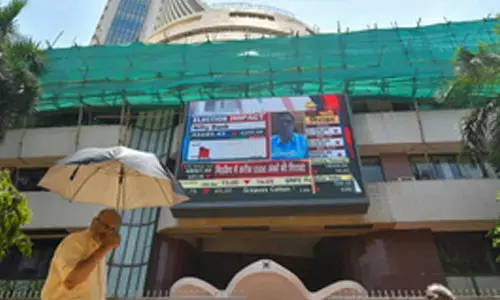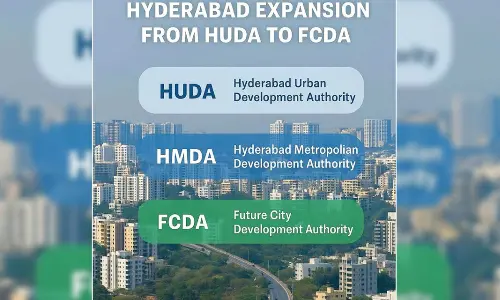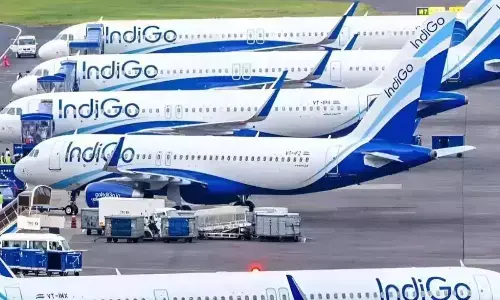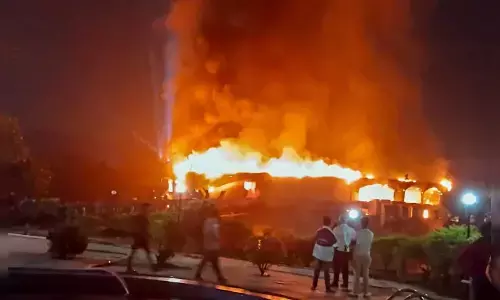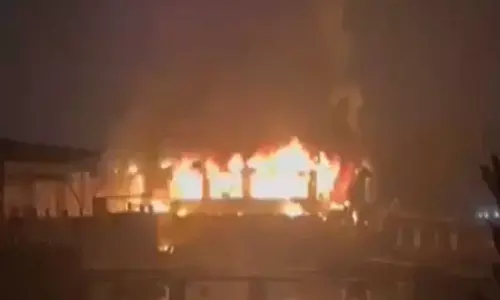Climate Change challenges for Deccan Region of Telangana

Global Warming is the increase of Earth's average surface temperature due to effect of greenhouse gases
Global Warming is the increase of Earth's average surface temperature due to effect of greenhouse gases, such as carbon dioxide emissions from burning fossil fuels or from deforestation, which trap heat that would otherwise escape from Earth. This is a type of greenhouse effect. Scientists from around the world with the Intergovernmental Panel on Climate Change (IPCC) tell us that during the past 100 years, the world's surface air temperature increased an average of 0.6° Celsius (1.1°F). This may not sound like very much change, but even one degree can affect the Earth. Some effects of climate change that we experience all over the world are as follows: Sea level is rising; Sea-surface temperatures and large lakes are warming; Heavier rainfall is causing flooding; Monsoons are becoming highly unpredictable; Extreme drought and dry spells are increasing; Crops are withering; More frequent heat waves; Warmer temperatures affecting human health; Ecosystems are negatively changing; Hurricanes have changed in frequency and strength.
Within this domain, reliable long-range forecast of monsoon rainfall is critical for taking appropriate decisions at various levels from farmers' fields up to urbanised city habitations involving set of institutions and organisations. In agriculture sector, for example, suitable crops, management of irrigation, inputs supply, policies of food procurement and trade etc. as well as Hyderabad as a megacity characterised by climatic conditions that are extreme in the sense of large variations in temperature and precipitation show that these conditions are very likely to become more extreme in the future.
Therefore, there is a need to invigorate the current system and bridge the gap in timely flow of knowledge information based on climate forecast to support the decisions of stakeholders along the agri-food value chain in order to mitigate the climate impacts on agriculture. For Hyderabad, a comprehensive assessment of the future impacts of climate change is missing – an obstacle for an efficient urban planning process. This article discusses critical issues related to climate change, scientific predictions for Deccan region as well as challenges for policy makers, planners and administrators and specific recommendations for a climate proof Hyderabad region.
Monsoon forecast for Northern Telangana
According to the Potsdam Institute for Climate Impact Research (PIK) in Germany, the Indian Summer Monsoon (the Southwest Monsoon) is likely to reach Northern Telangana (17.5°N, 80°E) from 15th June. The intermittent rains may appear in the period 14 -20 June. With high probability, a dry spell occurs between 20-29 June. The continuous monsoon rainfalls are expected after 29 June. The uncertainty of the forecasted dates is +/- 4 days.Predictions for Hyd,
Deccan Region
Indo-German Project on Sustainable Hyderabad, led by this author, in which 60 scientists have worked for 8 years on different subjects – taking the analysis of 100 years of rainfall and other data at Begumpet – could make for the first time very clear long-term climate change projections and their implications for Hyderabad and the Deccan Region of Telangana. Climate Change projections depend on global CO2-emission scenarios, best described by a high (A2, business as usual) and low (B2, global emission reduction from about 2035 on) global emission future.
The level of certainty of our climate system representations for Hyderabad was assessed by their degree of consensus with 17 independent climate models (provided by the Inter-governmental Panel on Climate Change). In the following projections for the two most relevant climate variables impacting urban functions are explained
Very strong monsoon rain events – more than 80mm/day, currently occurring once in two years – are the major cause of flooding in Hyderabad, resulting in a wide range of secondary impacts: ranging from adverse health effects to traffic breakdowns and infrastructure damage. Independent of the emission scenario, we have to prepare for a 60% increase in the frequency of these events until 2050. Here the 17 models show a high agreement under the A2 (business as usual) scenario, while under the B1-scenario the variance is larger, indicating however a definite increase in monsoon events.
Extremely hot days – currently 1.2 days/year in Hyderabad according to the IMD-definition – cause direct adverse health effects and a multitude of indirect impacts (accidents, labour slackening etc.). In general, there will be a monotonous increase in the frequency of heat wave days during the coming decades, which will certainly be lower for the B1 scenario than for the A2 scenario. Compared to the average of days now, for the high-emission scenario (A2), we expect about 20 days until 2050 and 40 in 2100. While for the low-emission scenario (B1) the number with values of 8 and 13 days respectively are still a big challenge.
Higher temperatures to be the norm?
According to the studies, it seems that we have to live with rising temperatures in the future. Even if the global warming process will come down in the coming 50 years, we cannot escape from the damage already done to the ozone layer. This means we have to design policies, programs and implementation of a range of activities if we are serious about this challenge. The strategy should logically be a twofold one: On the long term we have to see that we bring our environment back again into the track and should not sacrifice it for economic growth. This just because at a certain stage, the economic growth itself will stagnate as environment and the resources we derive from it are exhausted. On the short and medium term we have to urgently implement climate change adaptation measures in all our economic, environment and social activities so that we can minimize the already disturbing effects of the climate change, for example the present severe heat waves.
(To be continued; Writer is Telangana Legislative Assembly Member, Chairman, Indo-German Climate Change Project and Humboldt Expert in Agriculture, Environment and Cooperation)










